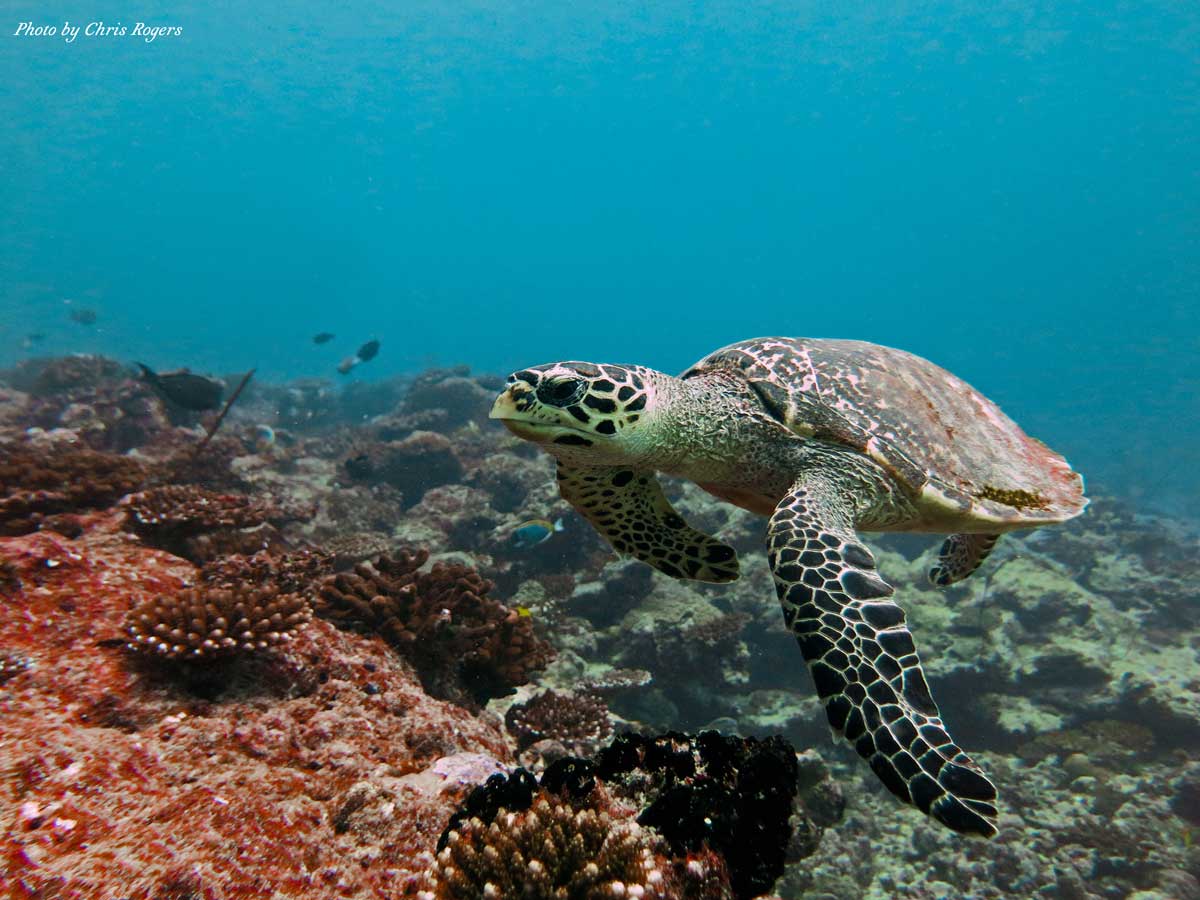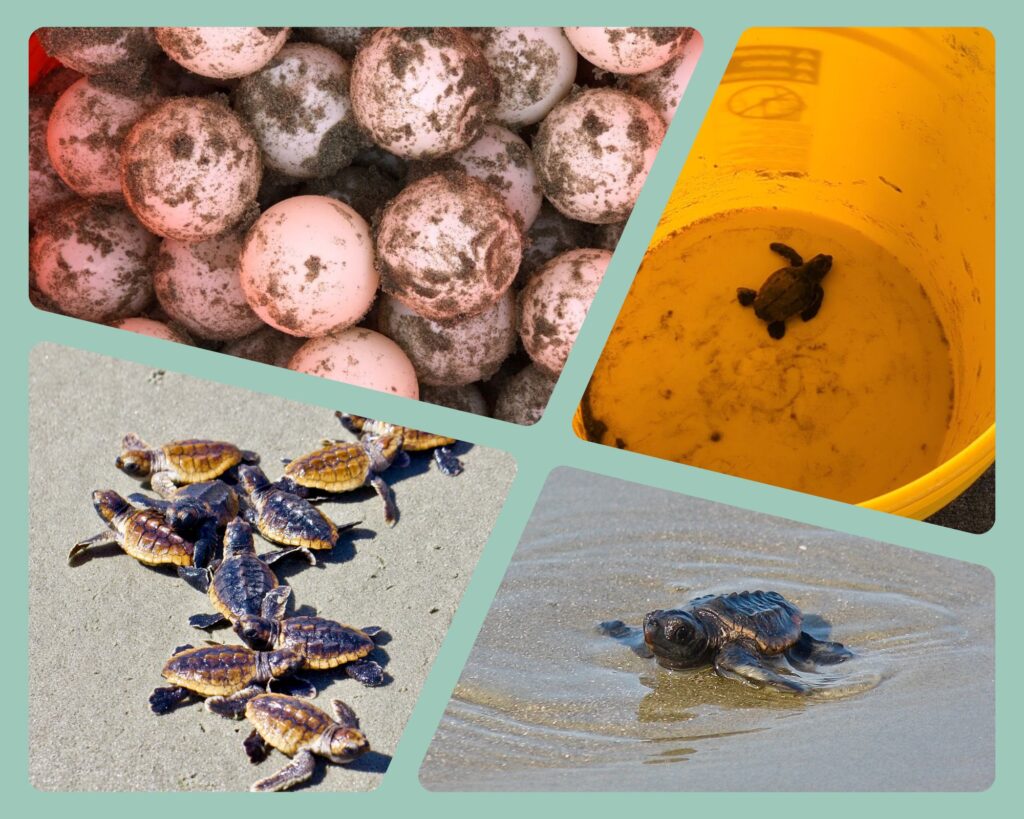Take A Walk With Seabrook Island Turtle Patrol

Efforts to Protect Loggerhead Sea Turtles Along the South Carolina Coast.
As early as 6 A.M. every morning from May to October, individuals clad in matching t-shirts can be seen spotted walking along Seabrook Island’s beach on the coast of South Carolina. These “walkers” are not your average beachgoers. They are dedicated volunteers from the Seabrook Island Turtle Patrol (SITP), who have received specialized training to search for “crawls”, distinctive patterns in the sand left by female Loggerhead Sea Turtles who have ventured on shore to lay their eggs. Seabrook Island’s pristine beaches have a long history as a nesting site for Loggerhead turtles. Thanks to the efforts of SITP and their trained volunteers, these turtles have a higher chance of survival.
Jane Magioncalda is a part-time resident of Seabrook Island who leads SITP during the nesting and hatching season (May – October). Below, she shares her knowledge of Loggerheads and how enriching volunteering to help this protected species can be.
 What is the group’s mission?
What is the group’s mission?
We are dedicated to safeguarding and preserving these majestic creatures on our beach. We do this by identifying and securing their nests, conducting detailed assessments, gathering vital information, and raising awareness amongst residents and their visitors alike. Rest assured that with our tireless efforts, these incredible animals will continue to thrive in their natural habitat.
What is the history of Seabrook Island’s Turtle Patrol?
We were established in 1990. The number of nests laid each year fluctuates due to the nesting cycle of Loggerheads. In 2019, we saw a record-breaking 90 nests, while in 2018, there were only 31. This year, we identified 40 nests, which is a little low as we had 79 last year. Over the last three decades, tens of thousands of hatchlings have started their life journey on our sandy shores. As our mission to protect these magnificent creatures has grown in importance, so has the number of volunteers. From just seven volunteers in the early years, we now have nearly 150 dedicated individuals helping us during each season.
Some Loggerhead Sea Turtle Fun Facts
How many eggs does the Loggerhead lay?
The female Loggerhead digs 18-24″ deep with her flippers, lays an average of 120 eggs, then covers up the hole and heads back out to sea, never to return to that nest.
 How long does it take for the Loggerhead eggs to hatch?
How long does it take for the Loggerhead eggs to hatch?
On average, incubation takes 60 days. However, higher temperatures can result in faster hatching (47-55 days), while lower temperatures can prolong it (65 days or longer).
How is a Loggerhead’s gender determined?
The temperature in the nest determines the gender of hatchlings. Females hatch in hotter temperatures, while males hatch in cooler temperatures.
What is a sea turtle “boil”?
When the eggs hatch and hatchlings begin making their way from below ground to the surface, the sand begins moving in the nest, resembling water starting to “boil”.
What happens after a boil?
Three days after a boil, SITP will inventory the nest, which includes counting the shells and identifying the remaining baby sea turtles. Seabrook Island residents and their guests are welcome to attend and observe this process. An Education Committee member will also be present to educate the onlookers. It is crucial to allow the counters to perform their duties undisturbed. They must maintain precise records that must be submitted to the South Carolina Department of Natural Resources (SCDNR).

How can beachgoers help protect the Loggerheads during nesting season and throughout the year?
- Please refrain from walking on the dunes and disturbing the nests, many of which are hard to see without a trained eye.
- Collecting and disposing of garbage properly is crucial, especially plastic bags, as they can be mistaken for jellyfish, a primary food source of the Loggerheads.
- Turn lights out on the beach from 10 P.M. through sunrise during nesting season to avoid disorienting nesting females and hatchlings.
- Fill in any holes and level any sand structures on the beach. These become dangerous obstacles for the turtles.
- Remove any equipment you bring to the beach, as it could ensnare large and small turtles.
What do you find most rewarding about volunteering for Seabrook Island Turtle Patrol?
It is a heartwarming experience to be able to assist a struggling turtle that would not have made it on its own. Witnessing the joy onlookers feel as the baby turtles hatch is genuinely unforgettable. It’s always a wonderful feeling knowing that you were able to make a positive impact on the world, no matter how small.

What kinds of volunteer roles are available for Seabrook’s Turtle Patrol?
There are several ways to get involved. Each position has specific responsibilities, and we appropriately train each new volunteer to follow a protocol of regulations. As of today, we are at capacity for our volunteers, but there is a waitlist. Please note volunteering is a full-time commitment from May through October.
Nest Surveys (“Walkers”) – Walkers look for nests. They are assigned to a specific zone and day of the week.
Pre-Hatch Activity Team (“PHAT”) – This team works to maintain and protect the sea turtle nests, focusing on the critical weeks leading up to hatching. PHAT participation requires availability to walk the beach in the late afternoon or evening on the assigned day(s).
Inventory Team – This team inventories the nests three days after hatching indicators are observed.
Social Committee – This committee secures the facility and refreshments for our Kick-Off Meeting, the T-shirt Pick-Up Party, and the Year-End Dinner.
Education Committee – This committee provides team members, residents, visitors, and the public with opportunities to learn about sea turtles and related wildlife and conservation topics.
Government & Community Outreach – This committee is responsible for government, civic, and public relations communications.
How does someone learn more about or join the SITP?
You may visit our website or contact us by email at hello@siturtlepatrol.com and add your name to the volunteer waitlist, or visit our website at the link below.
About Jane
Jane and her husband were hunting for a vacation home with the best direct route from the Piedmont of Charlotte, NC, to a lovely beach. They narrowed their search to Kiawah Island and Seabrook Island, eventually choosing Seabrook for its atmosphere and value. The couple started visiting on weekends and vacations. Jane was fascinated with the Turtle Patrol and loved watching them in action. Eventually, she retired and volunteered full-time on the team. Although she didn’t expect to run SITP, Jane has been doing so for three years. Her official title is Nesting Permit Holder, and she undergoes annual training under the guidance of the South Carolina Department of Natural Resources (SCDNR) to retain that accreditation.


